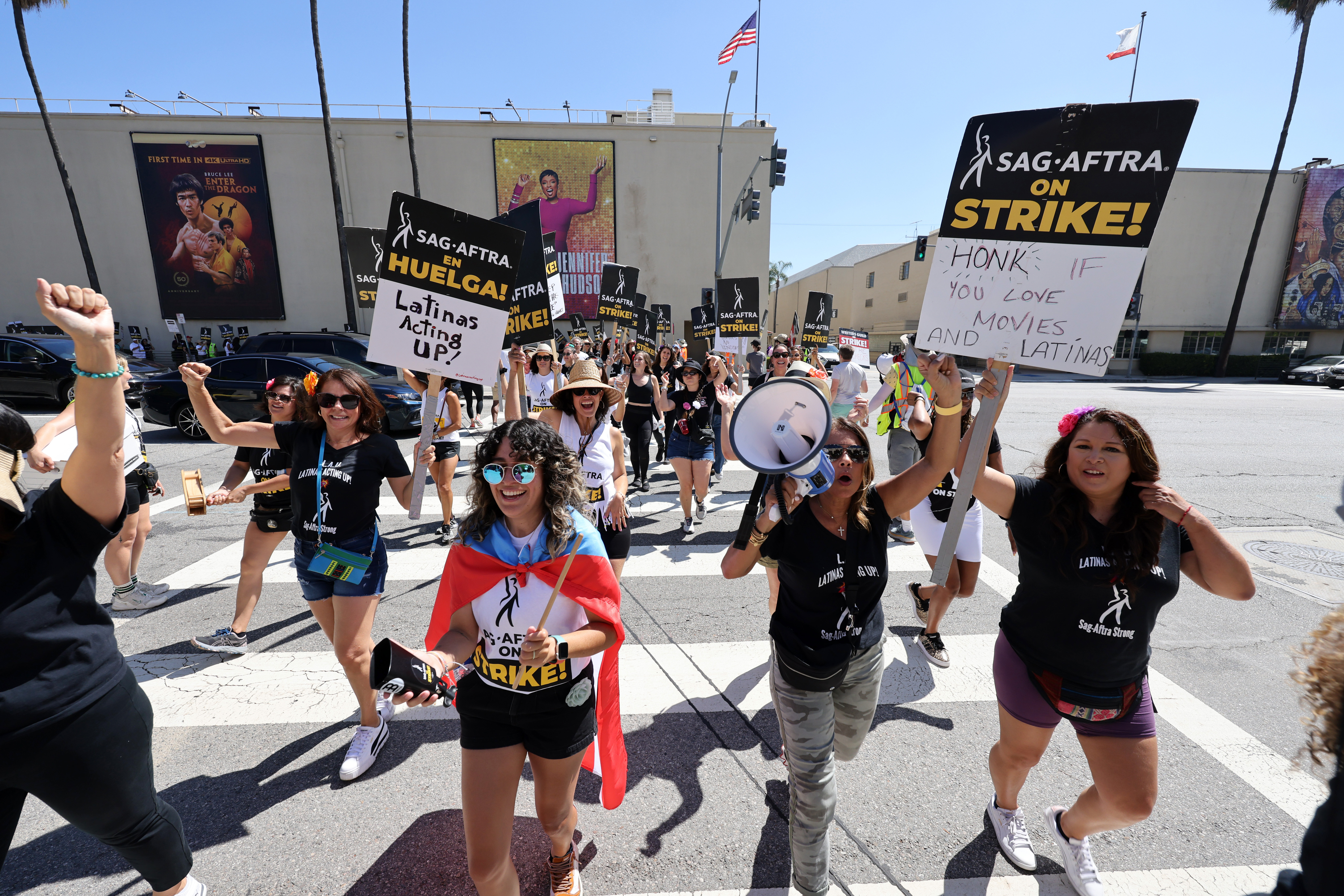Hollywood executives are deprioritizing diversity “at their own peril,” a new report out Thursday warns.
Diversity is essential to the entertainment industry’s survival as moviegoers of color consistently drive box-office success, movies with more diverse casts tend to perform best at the box office and prioritizing diversity behind the camera is often what ensures diversity on screen. These have all been consistent findings in the annual editions of the UCLA Hollywood Diversity Report, including in the latest report, released Thursday.
For over a decade, the team behind the report, led by UCLA sociologists Ana-Christina Ramón and Darnell Hunt, has tracked the relationship between diversity and Hollywood’s bottom line. The reports have perennially documented how people of color drive box office success, both as consumers and producers.
All of that once again held true in 2023, when people of color dominated opening weekend sales for 14 of the top 20 highest-earning films premiering in U.S. theaters. In addition, women drove the box office success of three of the top 10 films, including the highest-grossing movie of last year, “Barbie.” (The researchers plan to release a second installment of the report, examining streaming films, later this year.)
The report has routinely documented that audiences will show up for movies with diverse casts. That was once again the case in 2023, with blockbusters like “Barbie,” “The Hunger Games: The Ballad of Songbirds & Snakes” and “Shazam! Fury of the Gods,” which all featured casts with a significant portion of actors of color.
For the second consecutive year, the researchers tracked disability as a category. In 2023, three of the 20 biggest films at the box office, and one of the top 10, featured casts in which more than 20% of the actors had a known disability, they found.
These patterns also hold at the global box office. The report has continually challenged Hollywood executives’ conventional wisdom that diversity doesn’t sell internationally. Once again, the global box office results in 2023 debunked that myth as movies with predominantly white casts consistently underperformed internationally, according to the report. In 2023, nine of the top 10 films at the global box office featured casts that were more than 30% people of color. Movies with 11% or fewer actors of color did the worst at the global box office, making just $18.2 million. Financial success also comes to movies that prioritize gender diversity: Half of the 10 biggest films worldwide featured more than 40% women in their casts.
“Once again, these findings bust the myth that ‘diversity does not travel,’” the researchers wrote. “This report series has repeatedly found that films with casts that are racially and ethnically diverse perform well in international markets. As diverse as the U.S. audience, global audiences want to see themselves reflected on screen.”
As an industry governed by the bottom line, Hollywood loves to make as much money as it can from existing intellectual property. But that usually produces success only when filmmakers get opportunities to take creative leaps and make something original from an existing idea, like “Barbie.” According to the report, this is also true when new installments of long-running franchises feature more diverse casting. In 2023, “Creed III,” “Scream VI” and “John Wick: Chapter 4” all “featured lead actors of color and casts with 50 percent or more actors of color,” according to the report. That diversity paid off quite literally: Audiences of color made up at least 60% of each movie’s opening weekend audience at the U.S. box office, and each movie became the highest-grossing installment of their respective franchises to date.
“When the film industry gives them what they want, people of color deliver at the box office year in and year out,” Ramón, director of the Entertainment and Media Research Initiative at UCLA, said in a statement. Hunt, the report’s co-author, is UCLA’s executive vice chancellor and provost.

Year after year, the UCLA report, as well as other annual research on Hollywood, has found that diversity on screen goes hand in hand with diversity behind the camera. According to this year’s report, among the theatrical films directed by a person of color, nearly 90% featured casts with at least 30% people of color, and more than 60% had casts in which the majority of actors were people of color. While just five major theatrical films in 2023 were directed by women of color, all but one of them featured casts with a majority of actors being people of color.
Despite the overwhelming evidence that diversity is essential to Hollywood’s bottom line, you wouldn’t know it based on who gets the opportunities. For example, men still represent the lion’s share of big-budget movie directors. Greta Gerwig’s “Barbie” was one of just three female-directed movies with a budget of $100 million or more, compared with 25 that were directed by men, according to the report. And though directors of color are slowly getting more opportunities to helm bigger projects, the report found that women of color behind the camera continually get left out.
“It is an exclusive club to direct a theatrical film that has a wide release. More BIPOC directors were given the opportunity to join this club in 2023,” the researchers wrote. “However, the increase mainly benefited men of color, who comprised 80 percent of the BIPOC directors that year.”
Overall, women and people of color remain disproportionately underrepresented in many areas in Hollywood, as the report and other research continues to find. Several groups remain glaringly underrepresented. For instance, among the top theatrical films in 2023, zero featured Native leads or were directed or written by a Native person. Across all of the films, there were only 10 Native actors featured as top-credited actors in their casts. And in a years-long pattern of erasure, Latinx actors, writers and directors are disproportionately left out of major theatrical films, the report found.

On disability, the researchers found a slight increase in disabled actors in major theatrical films, from 5% in 2022 to 7% in 2023. But none of those actors had a visible disability, according to the report. Overall, disability representation in film is still far from the reality of more than 26% of Americans identifying as having a disability.
With cost-cutting and mass layoffs at many studios and entertainment companies, and as the industry still slowly restarts production after the historic joint strikes last year of the writers and actors unions, a lot of creators in Hollywood have been sounding the alarm about diversity falling by the wayside. The researchers warn that, given the incremental nature of progress and how recently it has occurred, there’s a real danger that the industry could be regressing.
“If Hollywood sacrifices the progress it made on diversity, how will it sustain itself? Any new version of Hollywood needs to prioritize investing in diversity in front of and behind the camera,” the researchers wrote. “If movie studios disregard the findings from this report series that highlight the importance of giving increasingly diverse audiences the films they want to see, they do so at their own peril.”
The full text of this year’s UCLA Hollywood Diversity Report can be found here.
Disclaimer: The copyright of this article belongs to the original author. Reposting this article is solely for the purpose of information dissemination and does not constitute any investment advice. If there is any infringement, please contact us immediately. We will make corrections or deletions as necessary. Thank you.
